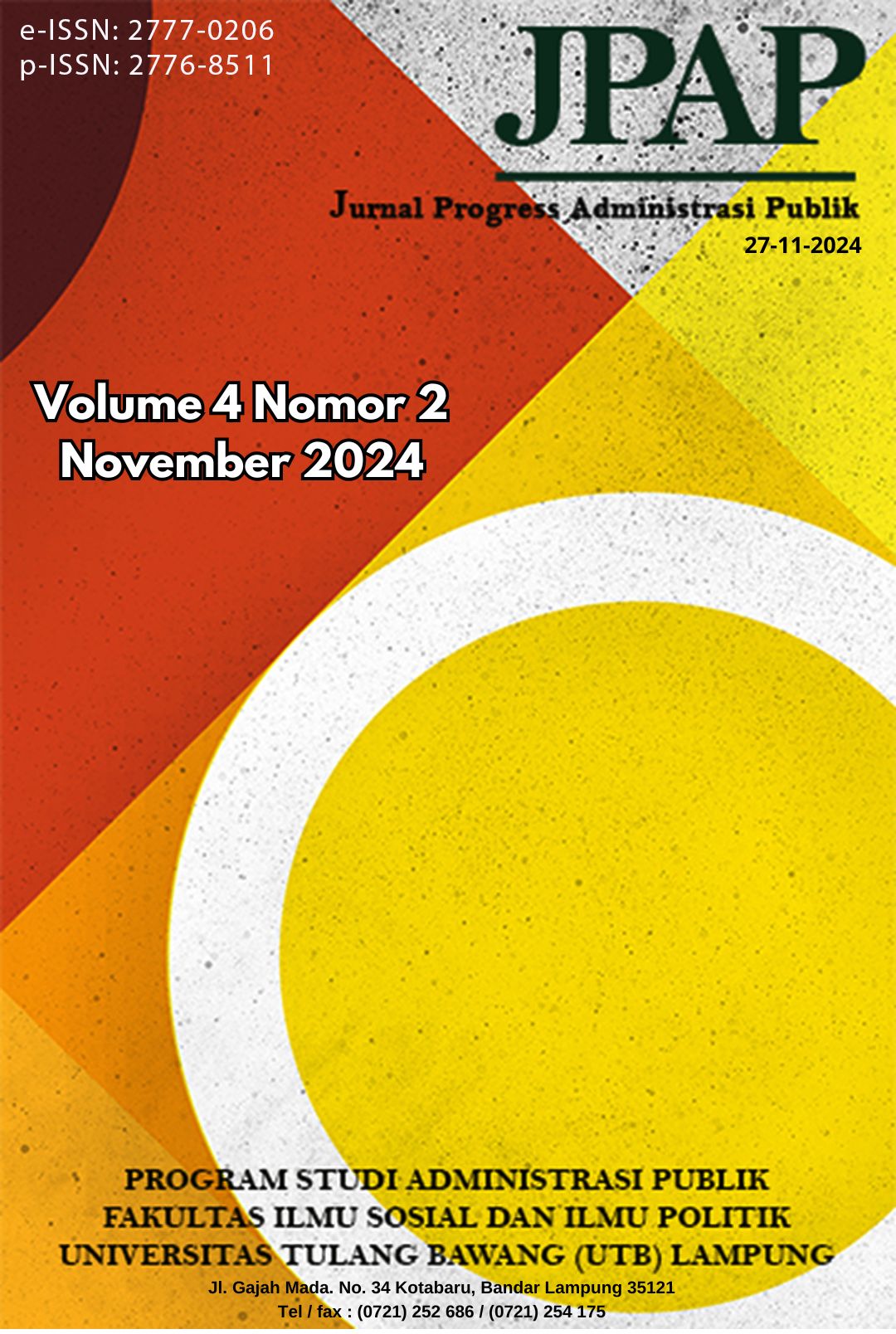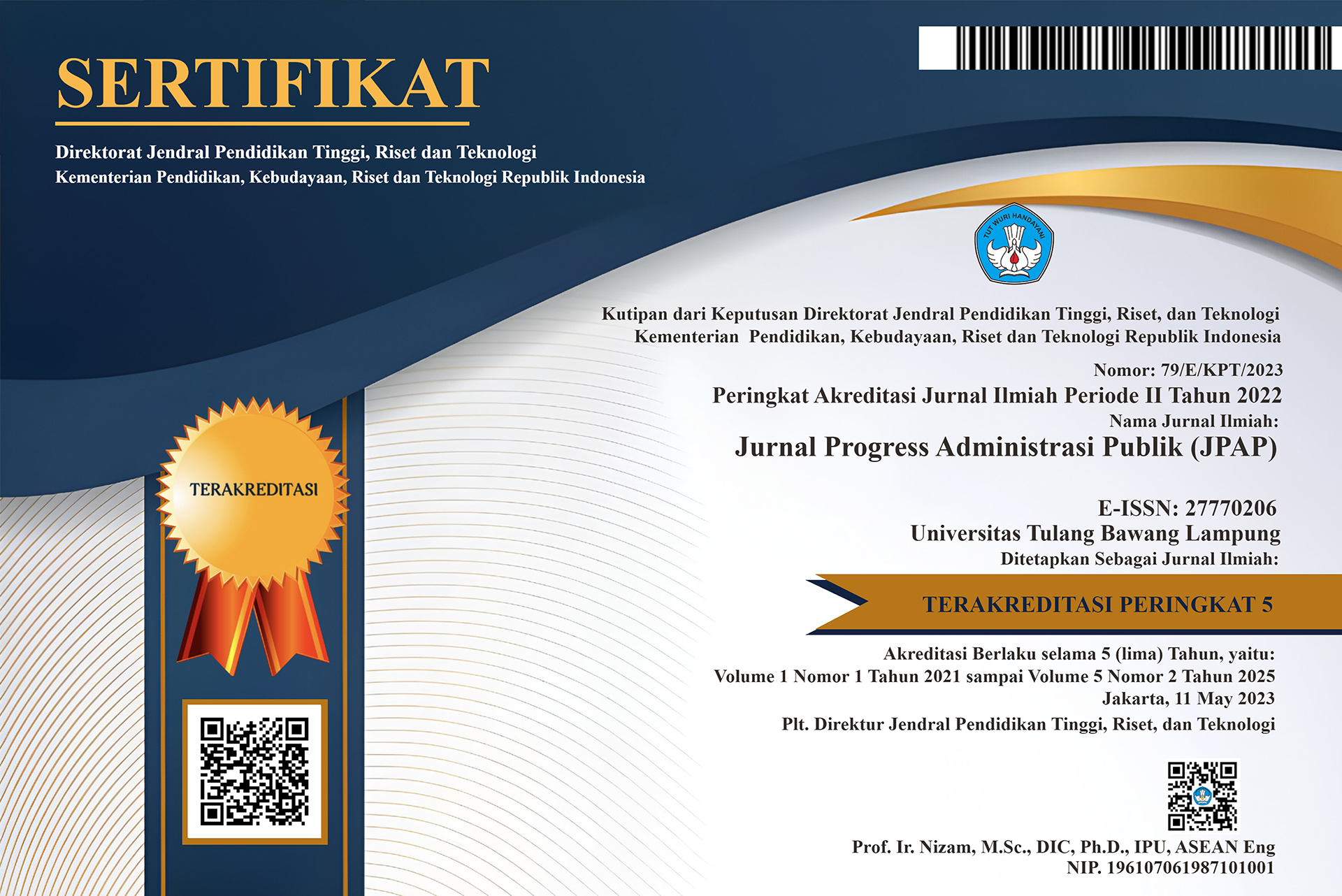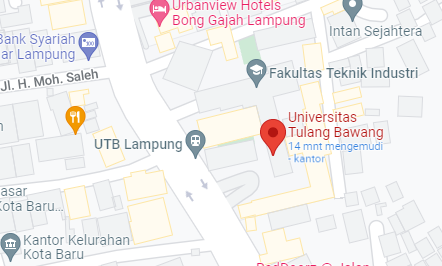PERAN STAKEHOLDER DALAM PENGEMBANGAN OBJEK WISATA AIR TERJUN KANTO LAMPO DI KELURAHAN BENG KABUPATEN GIANYAR
DOI:
https://doi.org/10.37090/jpap.v4i2.1409Abstract
Kanto Lampo Waterfall is located in Kelod Kangin Hamlet, Beng Village, Gianyar Regency. The development of this tourist attraction can run optimally if there is involvement from several stakeholders who have the ability. The elements that need to be involved in the development of this tourist attraction are elements in the penta helix collaboration concept consisting of elements of government, academia, society, private sector, and mass media. By maximizing the involvement of penta helix elements in the development of Kanto Lampo Waterfall attractions, the development process of this tourist attraction can run optimally. The problem faced in the development of the Kanto Lampo Waterfall tourist attraction is that there has been no involvement of private elements in the development process of the tourist attraction and there has been no continued involvement from all stakeholders involved in the development of the tourist attraction. The purpose of this study is to analyze the role of stakeholders in the development of Kanto Lampo Waterfall tourism object in Beng Village. The research method used is qualitative, with data collection techniques through observation, interviews, documentation, and literature studies. The results of this study show that four of the five elements of the helix have been involved in the development of this tourist attraction, but no involvement has been found from the private element, even though private involvement can help the marketing of this tourist attraction. Training and coaching provided by stakeholders do not have serious sustainability so the knowledge absorbed by the community does not run optimally. The use of social media by the manager of this attraction has not run optimally because of the lack of posts shared by the manager of the attraction. Keywords: Role; Stakeholders; Penta Helix; AttractionsDownloads
References
Badan Perencanaan Pembangunan Daerah dan Penelitian Pengembangan Kabupaten Gianyar. (2014). Gambaran Umum Kabupaten Gianyar. Dari: https://bappeda.gianyarkab.go.id/index.php/baca-artikel/3/Gambaran-Umum-Kabupaten- [Diakses: 17 Januari 2024].
Balipost. (2018). Unggulkan Industri, Beng Wakili Kabupaten Gianyar Dalam Lomba Kelurahan.
Berliandaldo, M., et al. (2021). Kolaborasi dan Sinergitas Antar Stakeholder dalam Pembangunan Berkelanjutan Sektor Pariwisata di Kebun Raya Cibinong. INOBIS: Jurnal Inovasi Bisnis dan Manajemen Indonesia Vol.4 (2), hal 221-234.
Ginting, Grace, et al. (2022). Analisis Peran Stakeholder dalam Pengembangan Pariwisata Siosar. PERSPEKTIF, 11 (1), hal 8-15.
Hidayat, D.C. dan Retno Maryani. (2019). Analisis Kelayakan Potensi Eko Wisata Air Terjun Riam Jito Di Kecamatan Kembayan, Kabupaten Sanggau, Kalimantan Barat. Jurnal Penelitian Pengelolaan Daerah Aliran Sungai 3 (1), hal 59-78.
JooUpdate. (2023). Bali!! Air Terjun Kanto Lampo Waterfall Info Bali Hari Ini. Dari:
httpsss://www.youtube.com/watch?v=ja91oF99uoA [Diakses: 17 Januari 2024].
Karya, N.W.P.P, et al. (2022). Analisis Kelayakan Finansial Wisata Air Terjun Kanto Lampo Di Kabupaten Gianyar. Jurnal Bumi Lestari Vol. 22 (01), hal 20-31.
Kompas.com. (2023). Air Terjun Kanto Lampo: Daya Tarik, Harga Tiket dan Rute. Berita Kompas.com 11 Februari 2023.
Lastari, N.K.H. (2023). Meningkatkan Tata Kelola Dimensi Kebersihan Dan Lingkungan Pada Daya Tarik Wisata Air Terjun Kanto Lampo Gianyar. Dharmakarya: Jurnal Aplikasi Ipteks Untuk Masyarakat Vol, 12 (4), hal 549-555.
Meirilla, Putu Ayu Mutiara. (2022). Pengaruh Kepemimpinan Transformasional, Motivasi, dan Disiplin Kerja Terhadap Kinerja Karyawan Pada Kanto Lampo Waterfall di Kabupaten Gianyar. Skripsi Universitas Mahasaraswati Denpasar.
Moleong, L. (2015). Metodologi penelitian kualitatif (Edisi revisi). Bandung: PT. Remaja Rosdakarya.
Miles, M.B, Huberman, A.M, & Saldana, J. (2014). Qualitative Data Analysis, A Methods Sourcebook, Edition 3. USA: Sage Publications. Terjemahan Tjetjep Rohindi Rohidi, UI-Press.
Paristha, N.P.T, et al. (2022). Peran Stakeholder Dalam Pengembangan Desa Wisata Kerta Kecamatan Payangan Kabupaten Gianyar. JUMPA Volume 8 (2). hal 625-648.
Pascasarjana Universitas Udayana. (2022). Dorong Pengelolaan Lingkungan Ekowisata Berkelanjutan, Program Studi Doktor Ilmu Lingkungan laksanakan Pengabdian kepada Masyarakat di Objek Wisata Kanto Lampo, Kelurahan Beng, Kecamatan Gianyar, Kabupaten Gianyar. Berita Pascasarjana 28 September 2022.
Posbali.net. (2023). Wujudkan Air Terjun Kanto Lampo Miliki Sertifikat CHSE, Prodi MBP PNB Adakan Aksi Kebersihan Lingkungan.
Putra, I.N.D. (2015). Pariwisata Berbasis Masyarakat Model Bali. Jurnal Sosial dan Humaniora, hal 147-160.
Rizky Phyar Saiputra. (2022). Air Terjun Kanto Lampo, Pesona Indah Air Terjun Suci di Bali. Berita Good News from Indonesia 07 November 2022.
Simanjorang, Feronica, et al. (2020). Peran Stakeholder Dalam Pembangunan Pariwisata di Pulau Samosir. Jurnal Profit Vol. 14 (1), hal 42-52.
Surat Keputusan Bupati Gianyar NO. 762/E-02/HK/2020 Tentang Penetapan Desa Wisata di Kabupaten Gianyar.
Tempo.co. (2023). Berkunjung ke Air Terjun Kanto Lampo, Wisata Alam Hits yang Instagramable di Gianyar Bali. Berita Tempo.co 22 Januari 2023.
Winia, I.N, et al. (2023). Improving Staff Communication through Foreign Language Training on the Kanto Lampo Waterfall Tourist Attraction. International Journal of Current Science Research and Review Vol. 5 (10) page 6556-6560.
Yasintha, P.N dan I Dewa Ayu Putri Wirantari. (2019). Pembangunan dan Pengembangan Strategi Obyek Wisata Air Terjun Kanto Lampo Di Kelurahan Beng Kabupaten Gianyar. E-jurnal Citizen Charter 1 (1).
Yuningsih, Tri, et al. (2019). Model Pentahelix Dalam Pengembangan Pariwisata di Kota Semarang. Journal of Public Sector Innovation, Vol. 3 (2), hal 84-93.
Yuni, L.K.H.K. dan Wayan Arta Artana. (2016). Strategi Pengembangan Air Terjun Tegenungan Sebagai Daya Tarik Wisata Alam Di Desa Kemenuh, Gianyar, Bali. Soshum: Jurnal Sosial dan Humaniora, Vol. 6 (3), hal 259-266.
Downloads
Published
How to Cite
Issue
Section
License
Copyright (c) 2024 Jurnal Progress Administrasi Publik (JPAP)

This work is licensed under a Creative Commons Attribution-ShareAlike 4.0 International License.























